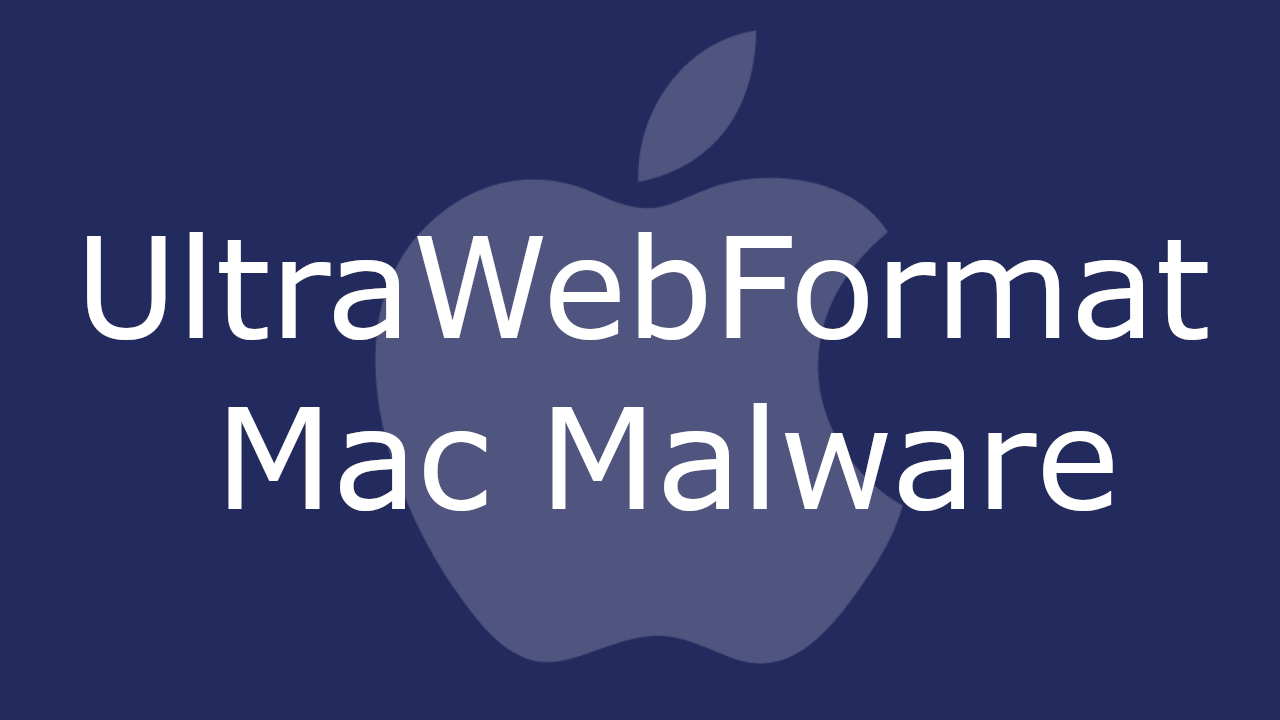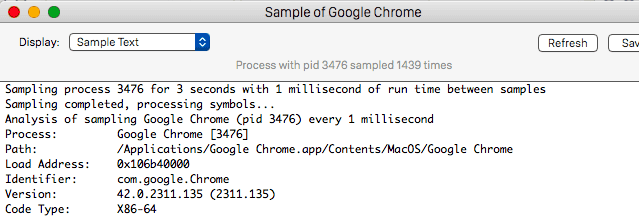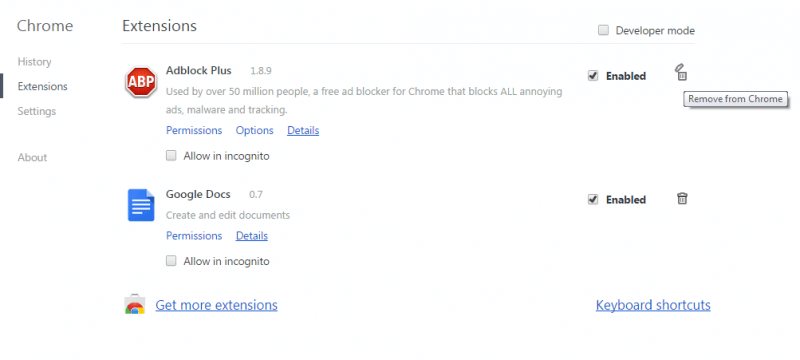UltraWebFormat
UltraWebFormat is an application that integrates with the Mac’s main web browser and changes its configurations and appearance. Therefore, UltraWebFormat is classified as a browser hijacker.

UltraWebFormat can attach itself to Safari, Chrome, Firefox, or any other browser and manage it by changing its settings. Typically, browser hijackers such as this one can incorporate some ad-generating and page-redirecting components into the system’s default browsing app. These components are programmed to flood your computer’s screen with different sponsored banners, pop-ups, box messages, and similar advertisements every time you open your browser. But this is not everything. Programs like UltraWebFormat are also likely to change the default search engine you are using to so that they can expose you to sponsored search results. On top of that, they can modify the browser’s homepage and place a new web address that is loaded every time you start a new browsing session. In case you’re familiar with all these changes, or you’ve been trying to uninstall them because you simply can’t put up with any of them, this page is the right place to be. Below you will find a special guide with instructions that can help you remove UltraWebFormat from your Mac and an automatic removal tool for professional assistance.
UltraWebFormat for Mac
UltraWebFormat for Mac is a web tool that is utilized to display large quantities of online advertisements. Users who have UltraWebFormat for Mac on their system are automatically redirected to specific websites and are faced with hundreds of pay-per-click commercials during their web browsing sessions.
Every click on the pop-ups and the promotional banners that the browser hijacker displays generates income for the developers. The same is valid for the visits to specific websites which the program automatically redirects you to – the more sponsored links and web ads you click on, the greater the revenue. This is a common online advertising practice which is not illegal but opens room for all sorts of negative behavior from programs like UltraWebFormat. For instance, the majority of the promotional messages that the browser hijackers display are typically placed in such a way that they cannot be removed from the screen and cannot be ignored. The pop-ups often cover key parts of the visited page or its content. The redirects to sponsored sites also happen automatically, without the users’ permission and often land them on unfamiliar web locations, some of which may even contain security hazards such as viruses, Ransomware, Trojans and other malware.
What is UltraWebFormat?
UltraWebFormat is a browser hijacker program that is frequently mistaken for a virus. In reality, however, UltraWebFormat has no harmful properties and is typically used as an online advertising tool.
Programs like UltraWebFormat can’t damage your Mac in a serious way which is quite relieving news. Still, if you have such software in your system, it is not a good idea to keep it there for long. The reason is there is a possibility that you may get exposed to potentially dangerous web materials if you interact with the random web links and ads that the hijacker displays.
The Ultra Web Format app
The Ultra Web Format app is a browser hijacking program that affects the Mac browser’s behavior. The Ultra Web Format app is commonly distributed for free or in a bundle with another program that is attractive to install.
It is not uncommon for infections such as Trojans, Ransomware and other viruses to get distributed via fake ads and misleading links. Thus, it is best to stay away from such online offers and uninstall the software that is generating them without control. Plus, a browser hijacker may slow your device down, as well as cause your browser to crash or become unresponsive due to overload with unnecessary ads.
SUMMARY:
| Name | UltraWebFormat |
| Type | Browser Hijacker |
| Detection Tool |
UltraWebFormat Removal from Mac
For a quick way to remove UltraWebFormat try to do this inside your Mac browser:
- Open your Mac browser.
- Go to Preferences.
- Now navigate to the extensions sub-menu.
- Look for any unfamiliar entries, including UltraWebFormat.
- Remove UltraWebFormat from your Mac as well as any other suspicious-looking items by clicking on the trash bin icon.
If this does not help then continue reading this article for more detailed instructions on how to get rid of UltraWebFormat!
![]()
The first thing you need to do is to Quit Safari (if it is opened). If you have trouble closing it normally, you may need to Force Quit Safari:
You can choose the Apple menu and click on Force Quit.
Alternatively, you can simultaneously press ⌘ (the Command key situated next to the space bar), Option (the key right next to it) and Escape (the key located at the upper left corner of your keyboard).
If you have done it right a dialog box titled Force Quit Applications will open up.
In this new dialog window select Safari, then press the Force Quit button, then confirm with Force Quit again.
Close the dialog box/window.
![]()
WARNING! READ CAREFULLY BEFORE PROCEEDING!
Start Activity Monitor by opening up Finder, then proceed to ![]()
Once there, look at all the processes: if you believe any of them are hijacking your results, or are part of the problem, highlight the process with your mouse, then click the “i” button at the top. This will open up the following box:

Now click on Sample at the bottom:

Do this for all processes you believe are part of the threat, and run any suspicious files in our online virus scanner, then delete the malicious files:

![]()
The next step is to safely launch Safari again. Press and hold the Shift key while relaunching Safari. This will prevent Safari’s previously opened pages from loading again. Once Safari is opened up, you can release the Shift key.
On the off chance that you are still having trouble with scripts interrupting the closing of unwanted pages in Safari, you may need to take some additional measures.
First, Force Quit Safari again.
Now if you are using a Wi-Fi connection turn it off by selecting Wi-Fi off in you Mac’s Menu. If you are using a cable internet (Ethernet connection), disconnect the Ethernet cable.
![]()
Re-Launch Safari but don’t forget to press and hold the Shift button while doing it, so no previous pages can be opened up. Now, Click on Preferences in the Safari menu,

and then again on the Extensions tab,

Select and Uninstall any extensions that you don’t recognize by clicking on the Uninstall button. If you are not sure and don’t want to take any risks you can safely uninstall all extensions, none are required for normal system operation.
![]()
The threat has likely infected all of your browsers. The instructions below need to be applied for all browsers you are using.
Again select Preferences in the Safari Menu, but this time click on the Privacy tab,

Now click on Remove All Website Data, confirm with Remove Now. Keep in mind that after you do this all stored website data will be deleted. You will need to sign-in again for all websites that require any form of authentication.
Still in the Preferences menu, hit the General tab

Check if your Homepage is the one you have selected, if not change it to whatever you prefer.

Select the History menu this time, and click on Clear History. This way you will prevent accidentally opening a problematic web page again.
![]() How to Remove UltraWebFormat From Firefox in OSX:
How to Remove UltraWebFormat From Firefox in OSX:
Open Firefox, click on ![]() (top right) ——-> Add-ons. Hit Extensions next.
(top right) ——-> Add-ons. Hit Extensions next.

The problem should be lurking somewhere around here – Remove it. Then Refresh Your Firefox Settings.
![]() How to Remove UltraWebFormat From Chrome in OSX:
How to Remove UltraWebFormat From Chrome in OSX:
Start Chrome, click ![]() —–>More Tools —–> Extensions. There, find the malware and select
—–>More Tools —–> Extensions. There, find the malware and select ![]() .
.

Click ![]() again, and proceed to Settings —> Search, the fourth tab, select Manage Search Engines. Delete everything but the search engines you normally use. After that Reset Your Chrome Settings.
again, and proceed to Settings —> Search, the fourth tab, select Manage Search Engines. Delete everything but the search engines you normally use. After that Reset Your Chrome Settings.
If the guide doesn’t help, download the anti-virus program we recommended or try our free online virus scanner. Also, you can always ask us in the comments for help!

Leave a Reply